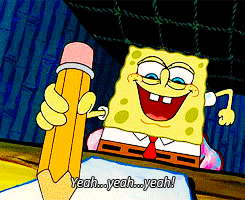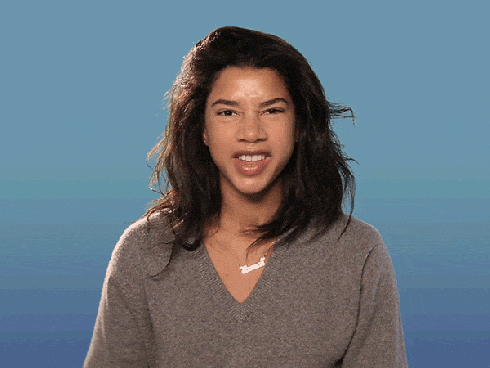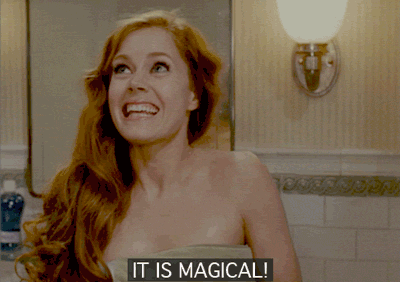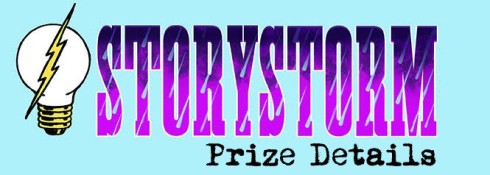You are currently browsing the tag archive for the ‘Rajani LaRocca’ tag.
Tara, thanks so much for having me on your blog. Today is exactly two weeks before my debut picture book, SEVEN GOLDEN RINGS, releases!

Set in ancient India, SEVEN GOLDEN RINGS is about a poor boy named Bhagat who wants to improve his family’s life by earning a place in the rajah’s musical troupe. Bhagat travels to the rajah’s city carrying his family’s entire fortune: a single coin and a chain of seven tiny golden rings. To stay at an inn, he needs to pay one ring per night in advance, but he doesn’t how long he will need to stay and doesn’t want to overpay. With his single coin, he can get one link broken. How can he separate the rings, pay one per night, and not waste any of them? Bhagat solves this conundrum and succeeds in an unexpected way. An author’s note explains the basics of binary numbers, how they’re related to Bhagat’s solution, and how they’re also related to modern-day computers.
Today, I’m going to talk about:
- Persistence
- Time
- The heart of your story
- Magic
1. I wrote the first draft of SEVEN GOLDEN RINGS back in October 2013. At the time, I had an idea for a novel (which would later become my MG debut, MIDSUMMER’S MAYHEM) and I’d written a couple of picture book texts. SEVEN GOLDEN RINGS was born from my memory of a logic puzzle I’d heard when I was a kid visiting my family in India. I took that puzzle, made it more complicated, and created a character who loved music and math (like my son) and who needed to solve this puzzle in order to save his family.
I then proceeded to revise this story almost 70 times before it sold. Let me emphasize that: SEVENTY. I revised it over four years, sometimes taking as much as six months between drafts because I was working on other projects (or perhaps doing other things, like my day job and raising my kids). The right ending for this story kept eluding me. I kept working on it, learned as much as I could about writing, and showed it to my critique partners over and over.

I started querying this book. And I got rejected. A lot! By agents who loved the folktale-like quality of the story but didn’t like the math. By those who loved the math but didn’t think they could sell something that felt like a folktale. By one who thought it was “too depressing” (which it is not) and others who never replied. Several agents did like it but didn’t like my other work enough to offer representation.

As many people will tell you, the path to publishing is a marathon, not a sprint, and the difference between those who get published and those who do not is all about persistence. So I kept going. I kept writing and writing, and over time I accumulated five picture book manuscripts that I thought were ready for agents’ eyes. And I finished revising my middle grade novel.

And then, in November 2017 I received multiple offers of representation for that middle grade novel. I shared my picture book manuscripts with the offering agents and got their take on them. And I made my choice: my fantastic agent, Brent Taylor of TriadaUS. Brent loved my novel and my picture books. My persistence had paid off.
In 2018, we submitted my novel and some picture books to publishers. And my books were rejected. A lot! (Do you see a theme here?). But we kept going, and I did revise and resubmits (R & R’s) when requested. We kept submitting. And what happened? SEVEN GOLDEN RINGS found the perfect editor and publisher: Cheryl Klein at Lee & Low books, who appreciated both the folktale-like quality and the math in the story, and who loved it enough to work on it with me to make it the best it could be. And friends, we sold FIVE books that year—my debut novel and four picture books!

2. You know how I wrote almost seventy drafts over four years, sometimes taking up to six months between drafts? When you step away from a story for long enough, it feels new when you read it again, and you can more easily see its flaws and find your way through what’s been confounding you.
It wasn’t until three years after I first drafted this story that I recognized the connection between the solution to Bhagat’s puzzle and binary numbers. So I wrote an author’s note that explained this connection, and why we care about binary numbers at all.
And the “right” ending to this story finally came to me almost four years after I first drafted it.
Sometimes time is exactly what we need to make a story right.

3. Through my revisions, some plot points changed. Words changed. But the heart of the story remained the same: a boy who loves music who sets out to save his family and must solve a math puzzle in order to do so.
When you are a writer, you’re going to get a lot of opinions on your work. Some will be helpful, and some not. But remember: YOU are the creator, and you decide what to keep and what to change. Develop your ability to recognize the heart of your story, what you really want to tell the world, and hold on to it, because that is what makes your story uniquely yours.

4. And after you’ve persisted and spent time working hard? When you find the right agent, editor, and publisher who also love the heart of your story? Friends, then it just feels like magic.

Thank you, Rajani, and best wishes with SEVEN GOLDEN RINGS!
Blog readers, you can win a signed copy of the book, just leave a comment below.
A random winner will be selected in a few weeks.
Good luck!
 Rajani LaRocca was born in India, raised in Kentucky, and now lives in the Boston area with her wonderful family and impossibly cute dog. She is a writer of stories for children, doctor of adults, and baker of too many sweet treats. Her debut middle grade novel, MIDSUMMER’S MAYHEM, was an Indies Introduce selection, an Indie next pick, a Kirkus Best Book of 2019, and a Massachusetts Book Award Honor title. Her debut picture book, SEVEN GOLDEN RINGS: A TALE OF MUSIC AND MATH, is set in ancient India and provides an introduction to binary numbers. Her virtual book launch will take place on October 27 at 7 PM EST with Silver Unicorn Books. You can register by clicking here.
Rajani LaRocca was born in India, raised in Kentucky, and now lives in the Boston area with her wonderful family and impossibly cute dog. She is a writer of stories for children, doctor of adults, and baker of too many sweet treats. Her debut middle grade novel, MIDSUMMER’S MAYHEM, was an Indies Introduce selection, an Indie next pick, a Kirkus Best Book of 2019, and a Massachusetts Book Award Honor title. Her debut picture book, SEVEN GOLDEN RINGS: A TALE OF MUSIC AND MATH, is set in ancient India and provides an introduction to binary numbers. Her virtual book launch will take place on October 27 at 7 PM EST with Silver Unicorn Books. You can register by clicking here.
Today we have a gorgeous cover reveal from Rajani LaRocca and Chaaya Prabhat. (Yes, all cover reveals are beautiful, but this one struck me!)

Wow, the cover is so bright and colorful! It reminds me of Indian holidays and celebrations I’ve attended. Can you explain why color is so important in Indian culture?
In India, colors have spiritual and political significance. For example, the color saffron—the bright orange found on the Indian flag, the color that comes from the most expensive spice in the world—stands for fire and purity. Speaking as someone who has grown up in the U.S. but who has visited India every few years since I was a kid, I can say that the exuberance of colors in India, especially in clothing, is just incredible. Clothes tend to feature vibrant combinations that aren’t common here in the U.S., and as a kid and now, I’ve always felt very special wearing bright, celebratory colors. Chaaya captured this energy in her illustrations for BRACELETS FOR BINA’S BROTHERS: every single page is filled with glorious colors that combine to make the characters and home in the story feel exciting and cozy, all at the same time.
There’s more Indian culture in the book, like the holiday for which Bina is making bracelets. What is Raksha Bandhan?
Raksha Bhandhan, also known as Rakhi, is a South Asian holiday that celebrates the love between sisters and brothers. Sisters tie bracelets or amulets on their brothers’ wrists as a symbol of protection, and brothers give their sisters small gifts in return. I love this holiday, as it commemorates sibling bonds that last through time and distance. I don’t have any brothers, but I was inspired by the wonderful relationship between my daughter and son, and between other sisters and brothers in my family. In BRACELETS FOR BINA’S BROTHERS, the first lines sum up the relationship: “Bina had three big brothers: Vijay, Siddharth, and Arjun. They sometimes annoyed her, but she loved them anyway.”
That’s exactly how I felt about my brother when we were kids.
I love that there’s a holiday for siblings!
Indian children will enjoy seeing themselves and their family traditions in this book. What do you want children from other races and cultures to take away?
I hope they enjoy learning about a different tradition and holiday! I also hope they see themselves in Bina and her brothers, who sometimes bother each other, but whose love shines through, especially when they spend time together and make gifts for each other.
I think it’s a beautiful holiday and one that we all should celebrate. (Maybe I would have appreciated my brother more instead of sitting on him.)
I noticed “storytelling math” on the cover. How did you incorporate math concepts into this picture book?
I’ve always loved math—I love its logic and precision, and I love the satisfaction of getting a “right” answer. When I attended a workshop on early childhood math hosted by Charlesbridge and TERC, the STEM education nonprofit, I’d never thought about pattern making as a math concept. But that experience opened my eyes to the ways that even very little kids learn and use math, and I’m grateful to be able to write a story that reflects my culture and family and explores an early mathematical concept for children.
Last but not least, I want to thank you for putting me in the book. I am honored.
Umm, “Tara” is the family DOG in the story. In Sanskrit the beginning is pronounced like the word “tar” so it’s TAR-a and it means “star.”
Yes, I am a star, thanks. And so is this book!
Thank you for sharing it with us!
BRACELETS FOR BINA’S BROTHERS will release from Charlesbridge on April 20, 2021!
by Darshana Khiani and the Soaring20s
It’s the middle of Storystorm, I hope your gears are turning and churning out ideas. If yours are a little rusty like mine, then I suggest starting small by following your curiosity and then letting your imagination take over. From TV shows, doodling, to puppy clothing, ideas are everywhere! Today members from the Soaring20s Picture Book Debut group are here to tell you where they got some of their ideas. Enjoy!
While struggling with a story about an otter, I doodled a secondary character—a sea lion who was roaring while flying a plane. Suddenly the idea to play with sounds that could be made by both animals AND vehicles took over. And before I knew it, I had a shiny new book dummy called ANIMALS GO VROOM!, which will be published by Viking in 2021!
Abi Cushman, author-illustrator of SOAKED! (Viking, July 2020)

I had an idea for a story while picking up my son at daycare one day. When I arrived, he was playing outside. He started running in my direction as soon as he saw me, but there was a group of kids in his way. Instead of going around, he roared and waved his “claws” at them, like a T-Rex. It worked, but I don’t know what was funniest, his strategy or the disapproving looks he got from the other three year olds.
Joana Pastro, author of LILLYBELLE, A DAMSEL NOT IN DISTRESS, illus. Jhon Ortiz (BM&K, September 2020), and BISA’S CARNAVAL, illus. Carolina Coroa (Scholastic, Spring 2020)
I once read that when Edward White completed America’s first spacewalk in 1965, he was reluctant to return to his ship and when he finally did, he said, “This is the saddest moment of my life.” Immediately, I thought, “Wow! Kids can really relate to that feeling.” I knew White’s story needed to be shared with young readers so I wrote it. The Stars Beckoned comes out from Philomel in early 2021.
Candy Wellins, author of SATURDAYS ARE FOR STELLA, illus. Charlie Eve Ryan (Page Street Kids, August 2020)
I’m currently working on a draft inspired by an episode of the non-kid-friendly show, “Drunk History” (Comedy Central). Each episode is a goldmine for highlighting overlooked histories of underrepresented groups, including women, people of color, and the LGBTQ+ community. Try working THAT point of inspiration into a picture book author’s note.
Kirsten Larson, author of WOOD, WIRE, WINGS: Emma Lilian Todd Invents an Airplane, illus. Tracy Subisak (Calkins Creek, 2020) and FIRE OF STARS: The Life and Brilliance of the Woman Who Discovered What Stars are Made Of, illus. Katherine Roy (Chronicle, 2021)
Ideas often come to me as I walk in nature. I think the quiet—wherever I am—opens up my mind and heart and allows me to be more receptive to sights and sounds and ideas! Just the other day I came across some scat—whose? With a lot of fur in it—whose? I am not sure what I will do with that but the discovery sure nurtures curiosity and questions. And who knows where that takes me.
Mary Wagley Copp, author of WHEREVER I GO, illus. Munir Mohammed (Atheneum, April 2020)
I’ve gotten a story idea from watching my kids have a huge fight.
Sam Wedelich, author-illustrator of CHICKEN LITTLE: THE REAL AND TOTALLY TRUE TALE (Scholastic Press, May 2020)
My dad sent me pictures from a local event called Prairie Plowing Days, a demonstration of steam tractors and gang plows to show how farming was done in the early 1900s. The event featured other antique farming equipment, such this tractor. Kansas to Washington, DC, in a tractor?! Research uncovered the American Agriculture Movement’s 1979 cross-country “tractorcades,” which led to the farmers occupying the National Mall for weeks, which led to more protests, which led to Farm Aid, which led to me writing FARMERS UNITE! Planting a Protest for Fair Prices.
Lindsay H. Metcalf, author of BEATRIX POTTER, SCIENTIST, illus. by Junyi Wu (Albert Whitman, September 2020), co-editor with Keila V. Dawson and Jeanette Bradley of NO VOICE TOO SMALL: Fourteen Young Americans Making History, illus. by Jeanette Bradley (Charlesbridge, September 2020), and author of FARMERS UNITE! PLANTING A PROTEST FOR FAIR PRICES (Calkins Creek, November 2020).

When I was a teenager, a song I loved came on the radio. I squealed, “Turn it up! This is the best song ever.” My friend’s Dad scoffed and replied, “Really? This is the best song ever?” That exchange stuck with me and became the kernel that launched the interaction between young Mason and his Grandpa in How Long Is Forever? Mine those long ago memories and you may find your next idea!
Kelly Carey, author of HOW LONG IS FOREVER?, illus. Qing Zhuang (Charlesbridge, April 2020)
I was taking care of my cousin’s puppy who was wearing a onesie (who knew there were dog onesies??) to keep her from licking her stitches. I took the puppy outside to pee and forgot to undo the onesie snaps. You can guess what happened next. That incident spawned a title and a story which I’m working on now!
Melanie Ellsworth, author of CLARINET AND TRUMPET, illus. John Herzog (Houghton Mifflin Harcourt, August 2020)
When a book editor read my article for the New York Times about what Julia, an autistic Muppet, means to my family, she asked me if I could write a picture book about an autistic girl with sensory issues. My daughter and I both live with autism and sensory issues, so I thought about what bothers us the most. I settled on sticky hands and created scenes with pancakes and syrup for breakfast and slime day at school.
Jen Malia, author of TOO STICKY! SENSORY ISSUES WITH AUTISM, illus. by Joanne Lew-Vriethoff (Albert Whitman, April 2020)
I’m not an illustrator, but sometimes ideas come to me in the form of images. I was at a writing conference with friends, and I suddenly pictured a sari where the border color was interspersed into the body of the sari, and the sari color was interspersed into the border. I sketched it, and realized it was a metaphor for a girl’s experience traveling to India to visit her grandmother, and the grandmother’s experience traveling to the U.S. to visit the girl. I’LL GO AND COME BACK will be illustrated by Sara Palacios and published by Candlewick Press in 2022.
Rajani LaRocca, author of SEVEN GOLDEN RINGS, illus. Archana Sreenivasan (Lee & Low, July 2020), BRACELETS FOR BROTHERS, illus. Chaaya Prabhat (Charlesbridge, 2021), WHERE THREE OCEANS MEET, illus. Archana Sreenivasan (Abrams, 2022)

I usually get my best ideas from brainstorming. Like with my book THE ELEPHANTS’ GUIDE TO HIDE-AND-SEEK (Sourcebooks Jabberwocky April 1, 2020), I started with the idea of a parody guidebook of some kind, then I brainstormed activities kids like that don’t really have guidebooks (and wouldn’t). Then I brainstormed angles for ways the guidebook could be ridiculous. Soon I had an idea that was much more interesting than the original small seed.
Kjersten Hayes, author of THE ELEPHANTS’ GUIDE TO HIDE-AND-SEEK, illus. by Gladys Jose (Sourcebooks Jabberwocky, April 2020)
A lot of my stories come from the “What If?” game. What if a spunky, creative girl who dances to the beat of her own drum decides to start ballet classes? What if instead, it was an Indian classical dance? These questions led me to write a story about a Indian-American girl trying to find an Indian dance class that suits her. This story is on submission now!
Darshana Khiani, author of HOW TO WEAR A SARI, illus. Joanne-Lew Vriethoff (Versify, Spring 2021)
 Soaring20s is a diverse group of authors and illustrators with picture book debuts soaring onto shelves in 2020 and beyond. Visit soaring20spb.com for behind-the-scenes posts, resources, and giveaways!
Soaring20s is a diverse group of authors and illustrators with picture book debuts soaring onto shelves in 2020 and beyond. Visit soaring20spb.com for behind-the-scenes posts, resources, and giveaways!
You can also follow them on Twitter @Soaring20sPB and Instagram @Soaring20sPB.

Soaring20s is giving away the choice of a picture book manuscript critique or a picture book dummy critique to two different winners.
Leave one comment below to enter.
You’re eligible to win if you’re a registered Storystorm participant and you have commented once below.
Good luck!
I’m a doctor as well as a writer. I take care of grownups all day, and write stories for kids all night…well, actually pretty much every minute of the day not spent taking care of my patients or my family. And as a doctor and a writer, there’s one thing I know for sure:
We write with our brains.

Photo by Robina Weermeijer on Unsplash
OK, not literally with our brains—writing usually involves hands. But the work of writing comes from our brains.
Duh, Rajani, you may say. We don’t need to be doctors to know that!
Aha, gentle writer, I say to you. But what part of our brains?
I’m not going to go deep into brain science here. I’m not going to delve into the workings of the cerebral cortex, the hippocampus, or the amygdala.
I’m talking about the conscious vs. the subconscious.

Photo by Christopher Rusev on Unsplash
Most of the time, we use our conscious mind. It’s the stuff we are aware of right now—the input from our senses, our actions, and our thoughts.
But there are times when the conscious mind gets stumped. You can’t figure out what happens next in your novel—all your ideas are predictable and boring. You have no idea how to make the rhyme work in a stanza of your hilarious picture book about unicorn hats. You cannot imagine coming up with thirty different story ideas in thirty-one days to start off 2020. You think, and you think, and you think with your conscious mind, and you’re coming up empty.
But the conscious mind is only the tip of the iceberg.

Photo by Derek Oyen on Unsplash
Most of what our brains do is actually under the surface of all that stuff we’re thinking about. The subconscious mind makes connections, draws conclusions, and remembers things we thought we’d forgotten. It helps us solve problems when our conscious minds are stumped. It might just be the wellspring from which all our creativity flows.

Photo by Ezra Jeffrey-Comeau on Unsplash
But how do we access the subconscious mind? How do we demand that something work when we can’t consciously ask it to work? How do we catch a cloud and pin it down?
Well, there are lots of ways.
1. Meditate. This is a tried and true practice for calming the conscious mind and accessing the subconscious more easily.

Photo by Deniz Altindas on Unsplash
2. Exercise. Getting your muscles pumping makes your conscious mind stop focusing on the problem at hand and can allow your subconscious mind to take over. I’ve gotten many ideas at the gym — including a tricky little plot point for my debut novel, MIDSUMMER’S MAYHEM, that had me laughing out loud and taking desperate notes on my phone while trying not to fall off the elliptical.

Photo by Thomas Park on Unsplash
3. Be in nature. If you can exercise in nature, even better! And if you can do it with a friend who is a good listener, even even better. Here’s my favorite friend exploring nature with me:

His name is Boomer. And yes, he’s impossibly cute.
4. Shower. I cannot tell you why, but the feeling of warm water running over your head can prod your subconscious into action like nothing else! I get ideas in the shower all the time; you can even get a special notepad to jot down ideas during your ablutions.

Photo by Chandler Cruttenden on Unsplash
5. Work on a different task that requires your attention. People often ask me how I can be a doctor and a writer. The truth is, I often feel that I’m a better writer because I’m a doctor. My day job requires intense focus, and when I take a break from it, my subconscious mind has often figured out something for my writing that my conscious mind couldn’t access.
I also like to shift between projects, especially if one project is long (like a novel) and the other is short (a picture book or essay…or, perhaps, a blog post). After I’ve finished working on one thing, I move to the other and find that the ideas are flowing again.

Photo by Joe Green on Unsplash
6. Sleep. Seriously! It gives your brain time to rest and rejuvenate. Even a nap can help. For rhyme, I find that a good night’s sleep often leads to discovering just the right turn of phrase first thing in the morning. While my conscious mind went night-night, my subconscious worked on finding the perfect combination of words.

During this Storystorm month, I hope you find your own ways to tap into your subconscious and get your ideas flowing like never before. As a parting gift, you are free to meditate and exercise in an outdoor shower while contemplating this lovely photo before taking a nice long nap:

 Rajani LaRocca practices medicine and writes middle grade novels and picture books in the Boston area. In her free time, she enjoys reading, traveling, and baking too many sweet treats.
Rajani LaRocca practices medicine and writes middle grade novels and picture books in the Boston area. In her free time, she enjoys reading, traveling, and baking too many sweet treats.
Her debut novel, MIDSUMMER’S MAYHEM (Yellow Jacket/Little Bee Books) was a 2019 Indies Introduce title and a 2019 Kirkus Reviews Best Middle Grade Novel. Her debut picture book, SEVEN GOLDEN RINGS: A TALE OF MUSIC AND MATH (Lee & Low, July 2020) is set in ancient India and introduces the concept of binary numbers. Learn more about her and her other forthcoming books at RajaniLaRocca.com and on Twitter and Instagram @rajanilarocca.

Rajani giving away a picture book critique and a copy of her debut picture book, SEVEN GOLDEN RINGS: A TALE OF MUSIC AND MATH (July 2020) to two different winners.

Leave one comment below to enter.
You’re eligible to win if you’re a registered Storystorm participant and you have commented once below.
Good luck!














